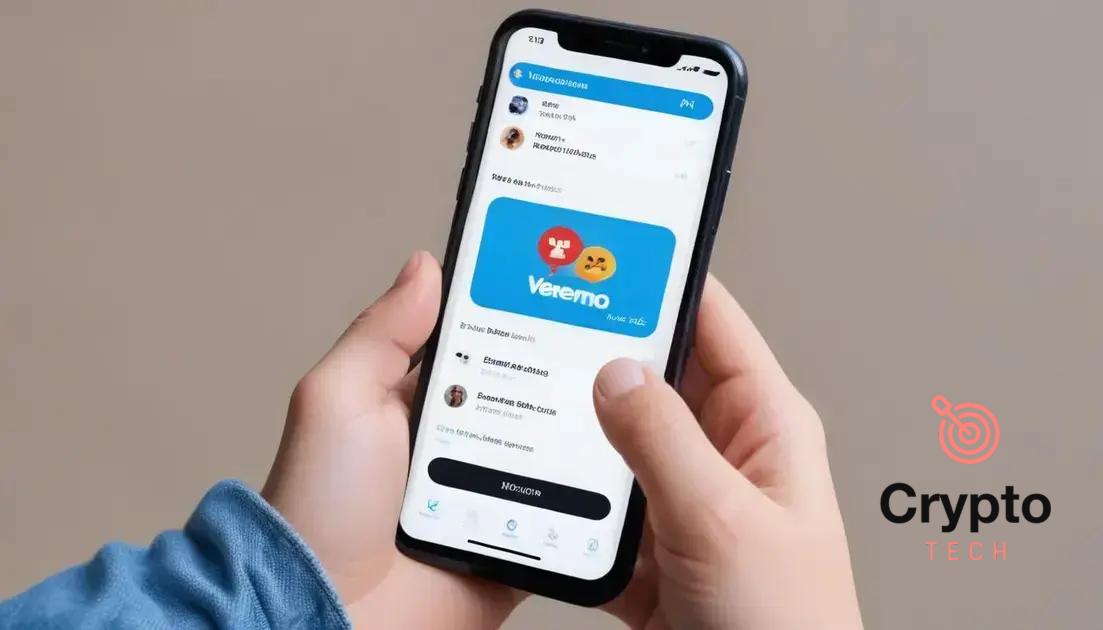What is Zelle and how does it compare to Venmo?

Zelle allows instant bank transfers without fees, making it ideal for quick payments, while Venmo is known for its social features but can incur transaction fees.
What is Zelle and how does it compare to Venmo? These questions often pop into our minds when considering digital payment platforms. In today’s fast-paced world, knowing the best options can make a difference.
Understanding Zelle: Features and Benefits
When discussing digital payments, it’s essential to understand Zelle. This platform offers unique features that differentiate it from other services. Let’s explore what makes Zelle stand out.
Features of Zelle
One of the most notable features of Zelle is its speed. Payments are typically transferred in minutes, making it an ideal option for users who need to send money quickly. Unlike traditional methods, there is no waiting period. Plus, Zelle is integrated directly with many banks and credit unions, which streamlines the transaction process.
Key Benefits of Using Zelle
- No fees: Zelle does not charge users for sending or receiving money, setting it apart from many other payment platforms.
- Wide acceptance: Many major banks and credit unions support Zelle, allowing for a broad user base.
- Ease of use: Sending money is straightforward, often requiring just an email address or a phone number.
- Security: Zelle transactions are encrypted, making them secure for users.
In addition to these features, Zelle is designed for convenience. Users can download the app or use their bank’s website to send and receive funds. This flexibility allows for seamless transactions from various devices. Moreover, the ability to schedule payments and keep track of transactions directly through your bank makes managing finances easier.
As technology progresses, platforms like Zelle continue to evolve, adapting to user needs and preferences. Understanding its features can help users make informed decisions about their payment options.
How Venmo Works: A Detailed Overview

Understanding how Venmo works is essential for anyone looking to send or receive money electronically. This popular platform offers a straightforward way for users to manage financial transactions between friends, family, and businesses.
Features of Venmo
Venmo operates as a mobile payment service, enabling users to transfer funds directly using their smartphones. With its social feed, Venmo sets itself apart by adding a social networking aspect to transactions. Users can see payment activities of their friends, which adds a layer of engagement.
How to Use Venmo
- Sign up: Create an account using your email or Facebook profile.
- Link your bank account: Connect your bank account or credit card to fund your transactions.
- Send money: Enter the recipient’s information, the amount, and a brief note.
- Receive money: Funds automatically transfer to your account once sent.
Using Venmo is quite simple and user-friendly. After setting up your account, sending money is just a few taps away. Whether splitting a restaurant bill or chipping in for a group gift, Venmo makes it easy. The app even allows users to add emojis or notes to transactions, enhancing the experience and making it fun.
On top of convenience, Venmo has a unique feature allowing users to make purchases at select merchants. This integration opens up more possibilities for using funds easily while shopping, both in-store and online. However, it’s important to remember that transferring money from your Venmo account to your bank account may take 1-3 business days unless you opt for an instant transfer, which incurs a small fee.
Comparing Fees: Zelle vs. Venmo
When choosing between Zelle and Venmo, one important aspect to consider is the fees associated with each service. Understanding how each platform charges users will help you save money in the long run.
Fees for Using Zelle
One of the most appealing features of Zelle is that it does not charge any fees for sending or receiving money. This means you can use the service without worrying about service charges cutting into your balance. This makes Zelle a cost-effective solution for sending money quickly, especially for frequent transactions.
Fees for Using Venmo
- Standard transfers: Venmo does not charge a fee for sending money from your Venmo balance or linked bank account.
- Credit card fees: If you use a credit card to send money, there is a 3% fee added to the transaction.
- Instant transfer fees: Venmo offers an instant transfer option to your bank account for a fee of 1.75%, with a minimum fee of $0.25.
While Venmo provides convenient features and a user-friendly interface, the fees associated with using a credit card or opting for instant transfers can add up. For users who frequently send money, these costs may influence their decision depending on their preferences and financial habits.
Ultimately, while both Zelle and Venmo have their respective fee structures, Zelle remains the preferred option for users looking to avoid transaction fees altogether. On the other hand, Venmo might be more appealing for those who appreciate its social networking features and who do not mind the occasional fee for added conveniences.
Speed of Transactions: Which is Faster?

Speed is a crucial factor when choosing between Zelle and Venmo. Users want to know how quickly they can send and receive money to avoid delays in important transactions.
Transaction Speed of Zelle
Zelle is known for its rapid transaction speeds. When you send money using Zelle, the transfer is usually completed within minutes. This is because Zelle directly connects to users’ bank accounts, allowing for instant transfers. Most Zelle transactions do not require waiting for processing, making it a go-to option for urgent payments.
Transaction Speed of Venmo
On the other hand, Venmo typically takes longer for money transfers. Although sending money from one Venmo account to another is almost instantaneous, users must wait 1-3 business days for funds to transfer from their Venmo balance to their linked bank account. If you choose the instant transfer option, you can receive funds immediately, but this service comes with a small fee.
- Zelle: Transfers are instant and usually completed in minutes.
- Venmo: Transfers are instant between Venmo users; however, cashing out to a bank account takes time unless you pay for instant transfers.
- Coverage: Zelle is integrated with various banks, so transaction times may vary by financial institution.
- Convenience: Venmo users may appreciate its social features, even if it takes longer for transfers to clear.
In summary, if speed is your priority, Zelle offers an edge with its rapid transaction times. However, Venmo provides a balance between social engagement and money management, though at the cost of speed in some cases. Choosing the right platform depends on your individual needs.
User Experience: Zelle and Venmo Compared
User experience plays a significant role when deciding between Zelle and Venmo. Each platform offers a unique interface, and the ease of use can impact how effectively users can send and receive money.
Interface and Navigation
Zelle has a straightforward interface, which is easy for users of all ages. The main screen allows you to send or request money quickly, and the integration with banking apps creates a familiar look for users. This design minimizes confusion and helps users get started with little to no learning curve.
Social Features
Conversely, Venmo integrates social networking within its app. Users can send money while adding a note and even emojis, making transactions fun and engaging. The social feed shows your friends’ transaction activities, adding a layer of interaction rarely seen in payment apps. This unique approach appeals to younger users who enjoy social sharing.
Transaction Notifications
Notifications in Zelle inform users about the status of their transactions promptly. Users receive alerts for completed transactions, which promotes transparency and keeps everyone informed. In contrast, Venmo provides not only transaction alerts but also the ability to comment on friends’ activities, fostering community interaction.
- Zelle: Directly integrated with bank apps provides ease of access and fast transactions.
- Venmo: Offers a fun, social environment with interactions between users.
- Notifications: Zelle ensures you are updated on transaction statuses promptly.
- Usability: Both apps are designed for simplicity, but their focus is tailored to different user experiences.
Ultimately, your choice between Zelle and Venmo will depend on what kind of user experience you seek. If you want quick and efficient transactions without the extra social features, Zelle may be your best option. On the other hand, if you value social engagement while making transactions, Venmo might be more appealing.
FAQ – Frequently Asked Questions about Zelle and Venmo
What is the main difference between Zelle and Venmo?
The main difference is that Zelle offers instant bank transfers with no fees, while Venmo includes social features and may charge for certain transactions.
Are there any fees for using Zelle?
No, Zelle does not charge any fees for sending or receiving money.
Can I use Venmo for business transactions?
Yes, Venmo allows business profiles, but it charges a fee for transactions made with a credit card.
How quickly can I receive money with Zelle?
With Zelle, money is typically transferred within minutes, making it very fast for personal transactions.





